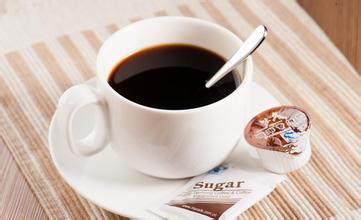El Salvador Coffee Flavor Description Grind Characteristics Variety Producing Area Manor Taste Introduction
coffee varieties
The chaos caused by the civil war affected economic development, but ironically allowed the ancient coffee species to remain. The situation was too chaotic for Salvadoran coffee farmers to catch up with the trend of coffee variety renewal in Central and South America.
El Salvador produces 100% Arabica coffee, of which 68% is Bourbon (Coffea arabica var. Bourbon), 29% Pacas, the rest include Pacamara, Caturra, etc.
Pacas, first discovered in Salvador in 1949, is a natural hybrid of Bourbon and Catula.
Pacamara, an artificially selected variety of pacas and maragogipe (or maragogype), was first bred in 1958 (one said 1954). Pacamara is a rare excellent variety under artificial breeding. Green is better than blue. It perfectly inherits the advantages of the mother plant. It has the excellent taste of pacas and the big size of malagogipe. Pacamara species are thought to be the result of the pursuit of larger Arabica species.
coffee planting
Most are grown by small farmers. Classification of Salvadoran farmers: (1 htct= 105 mu = 10000 square meters)
Small farmer, small producer, area less than 7.0 hect;
Medium farmer, medium producer, area between 7.0-70hect;
Large farmer, large producer, area greater than 70hect.
Farmers use traditional planting methods with almost 100% shade.
coffee harvest
Hand picked.
The harvest season lasts from October to March. The peak occurs between November and February.
coffee processing
Water washing treatment, sun drying

Important Notice :
前街咖啡 FrontStreet Coffee has moved to new addredd:
FrontStreet Coffee Address: 315,Donghua East Road,GuangZhou
Tel:020 38364473
- Prev

Description of Coffee Flavor of Musk Coffee characteristics of Grinding degree introduction of taste manor in producing area
Civets are distributed in many areas, but only Sumatran civets, also known as Indonesian civets, can produce Kopi Luwak. What makes the civet special is that it has a gland near its anus that secretes milky oil, which has always been a precious raw material for the perfume industry. Even Shakespeare's play King Lear has this dialogue: please give me one.
- Next

Cuban Crystal Mountain Coffee by Solarization and Water Wash Flavor Description Grind Characteristics Variety Introduction
Coffee was introduced to Cuba from Domica in 1748, and Cuba has since grown coffee. The fertile soil, humid climate and abundant rainfall in Cuba make it a natural treasure for coffee cultivation. Suitable natural conditions provide a favorable natural environment for the growth of coffee trees, where coffee is well planted and developed. In Cuba, coffee cultivation is regulated by the State. Cuba is the best.
Related
- Detailed explanation of Jadeite planting Land in Panamanian Jadeite Manor introduction to the grading system of Jadeite competitive bidding, Red bid, Green bid and Rose Summer
- Story of Coffee planting in Brenka region of Costa Rica Stonehenge Manor anaerobic heavy honey treatment of flavor mouth
- What's on the barrel of Blue Mountain Coffee beans?
- Can American coffee also pull flowers? How to use hot American style to pull out a good-looking pattern?
- Can you make a cold extract with coffee beans? What is the right proportion for cold-extracted coffee formula?
- Indonesian PWN Gold Mandrine Coffee Origin Features Flavor How to Chong? Mandolin coffee is American.
- A brief introduction to the flavor characteristics of Brazilian yellow bourbon coffee beans
- What is the effect of different water quality on the flavor of cold-extracted coffee? What kind of water is best for brewing coffee?
- Why do you think of Rose Summer whenever you mention Panamanian coffee?
- Introduction to the characteristics of authentic blue mountain coffee bean producing areas? What is the CIB Coffee Authority in Jamaica?

